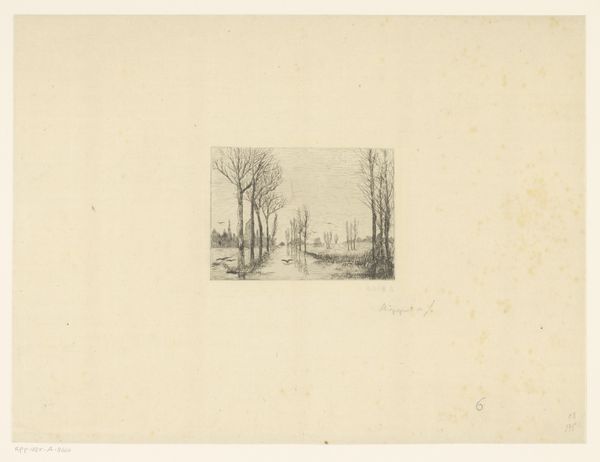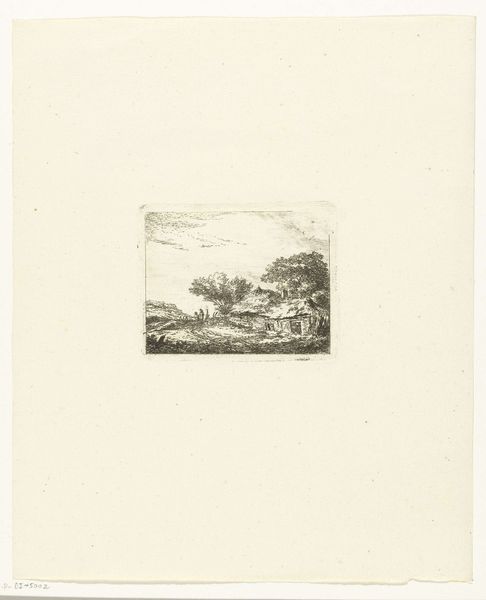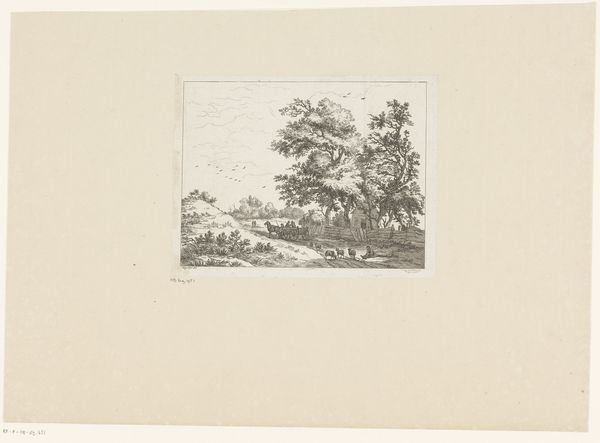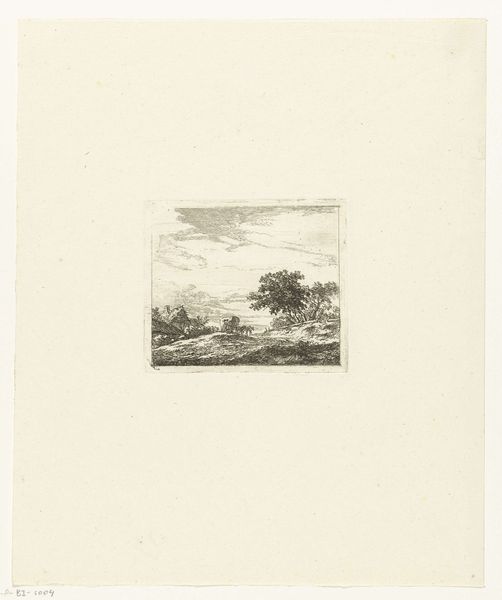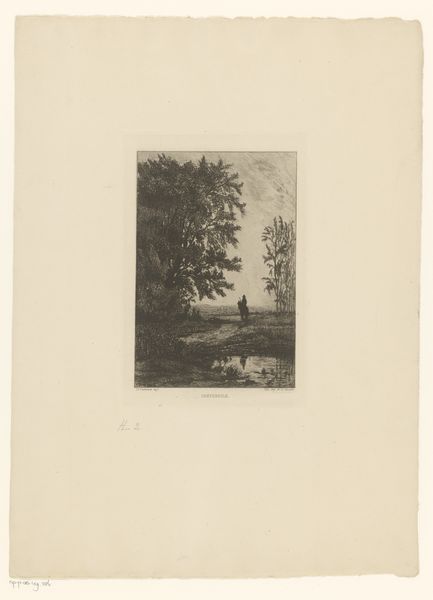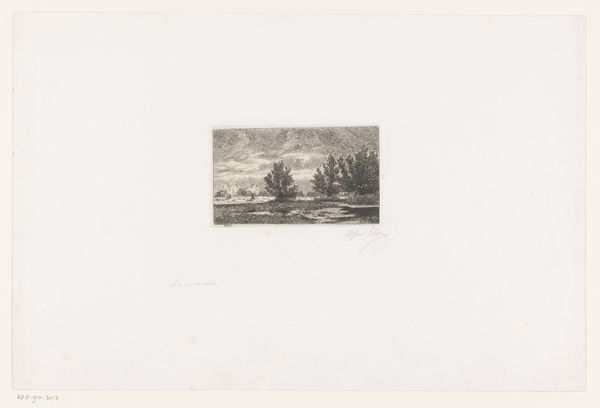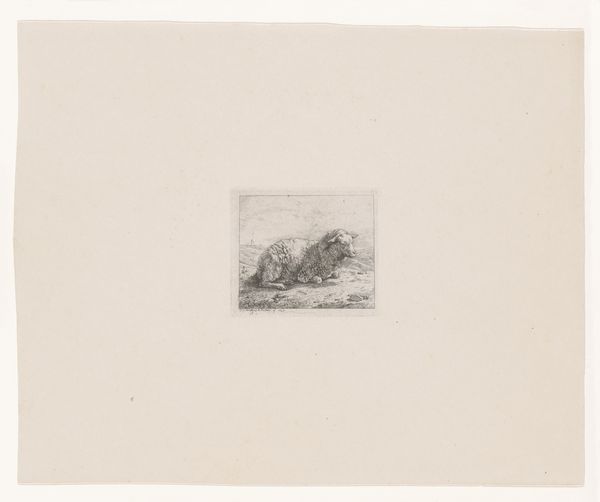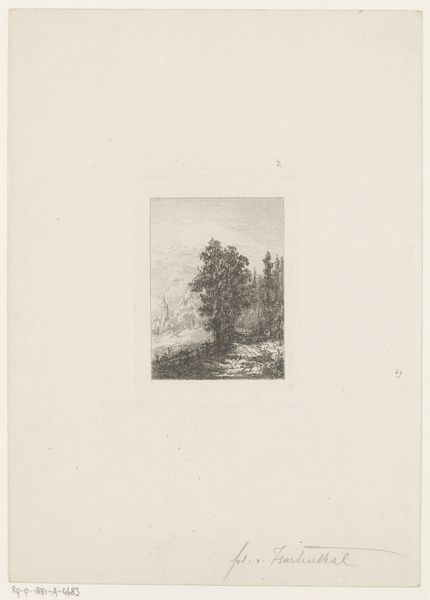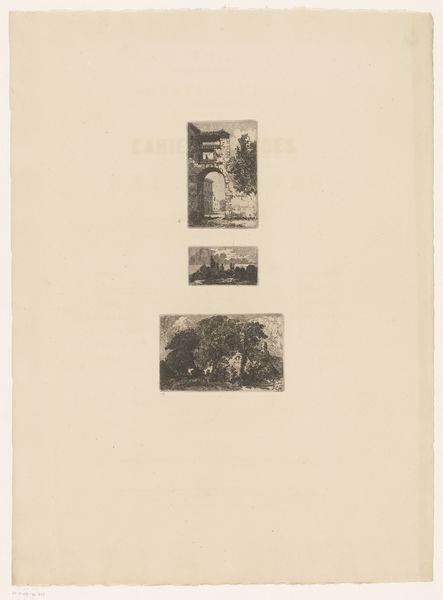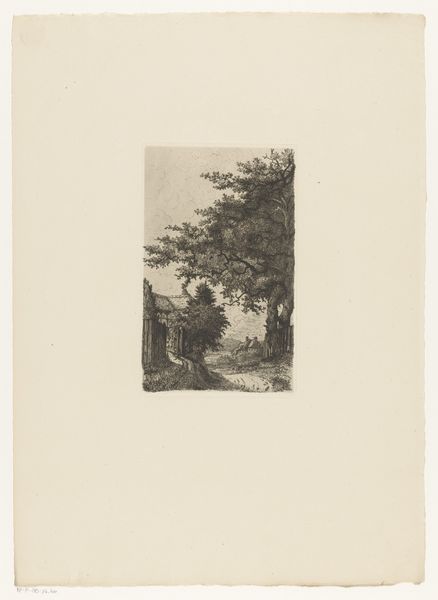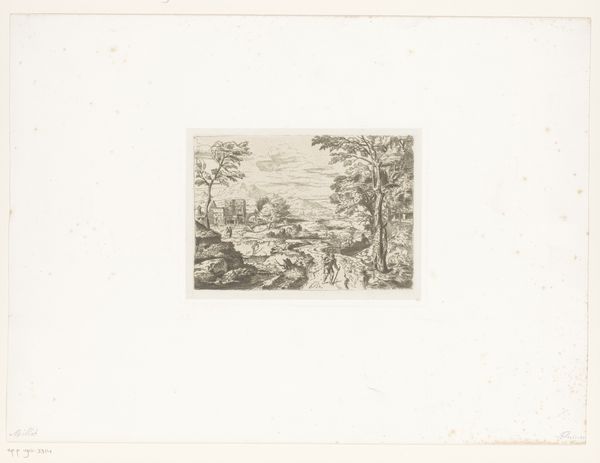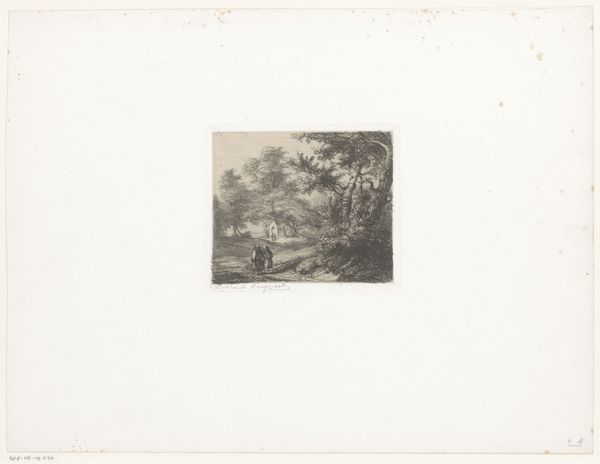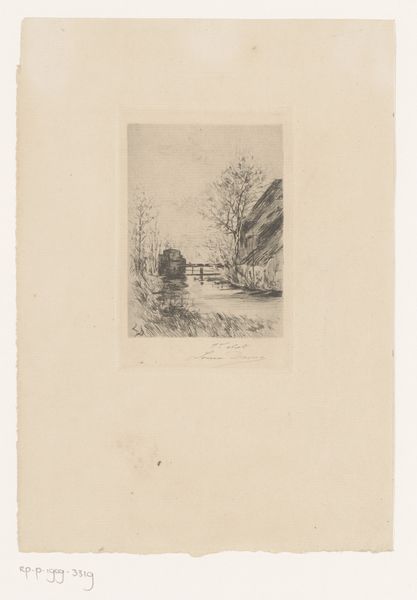
drawing, print, etching, paper
#
drawing
# print
#
etching
#
landscape
#
paper
Dimensions: height 249 mm, width 178 mm
Copyright: Rijks Museum: Open Domain
Editor: Here we have Willem Witsen's etching, "Schaapherder die op zijn staf leunt," made around 1886. It’s on paper, with a series of landscape vignettes arranged vertically. I’m immediately struck by the density of the linework in such a small piece; it creates a real sense of texture. What do you see in this piece from a formal perspective? Curator: Initially, the tripartite division establishes a formal structure, allowing a reading of progression or contrast. Consider the visual weight: the uppermost scene’s mountainous forms give way to the middle section with the architectural element and then resolve into the flat landscape with a hint of figure and body of water. The interplay of light and shadow, achieved through densely hatched lines, builds volume but equally important a subtle rhythm. Editor: That’s a great observation about the rhythm. I was focused on each individual landscape, but the etching technique definitely creates a unified feel across all three scenes. What about the composition of the individual landscape segments? Curator: Each segment has its own visual logic. The mountainous one uses a rising diagonal composition, the one with a wagon and village uses horizontal linearity, and the bottom utilizes organic asymmetry. Taken together they serve as a master class in compositional dynamics. They exemplify how different forms of organization can reside and inform within a whole, so it challenges assumptions about homogeneity in landscape art. The lines and forms themselves, how do you perceive them? Editor: The varying line weights definitely create depth and distance, and there are stark differences between the three sections. It really comes across with this density of the etching, that it could be three different artists. Curator: The very nature of etching enables fine, controlled lines. Here Witsen leverages that precision. To analyze the art elements, note how the line is used not just to define objects but to convey mood. From what we know, the etching technique and the printing process would add a layer of material engagement into artistic experience. Editor: It is an eye-opening observation; by considering the nuances of line and composition, I am struck at how meticulously and deliberately landscape is communicated in such a dynamic fashion. Curator: And seeing these landscapes layered is its own method of engaging in meaning, so one gets more out of analyzing form and composition!
Comments
No comments
Be the first to comment and join the conversation on the ultimate creative platform.
